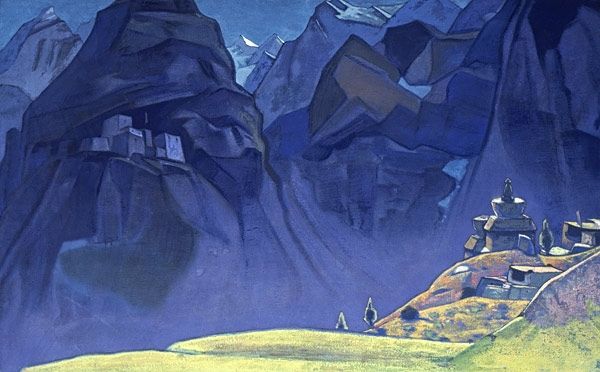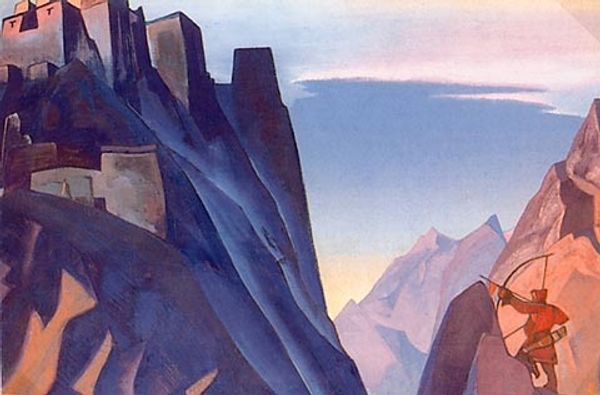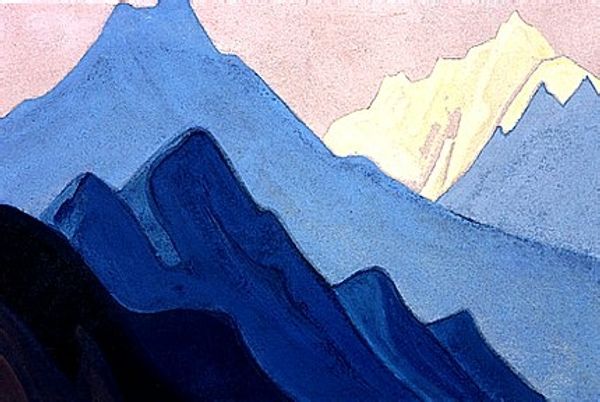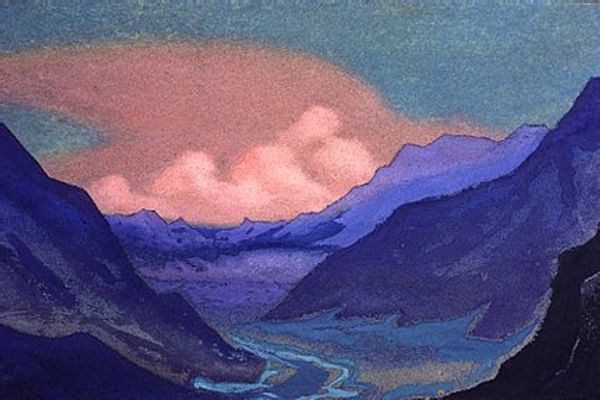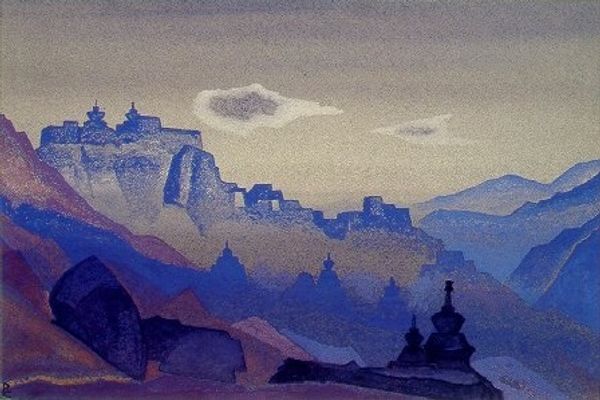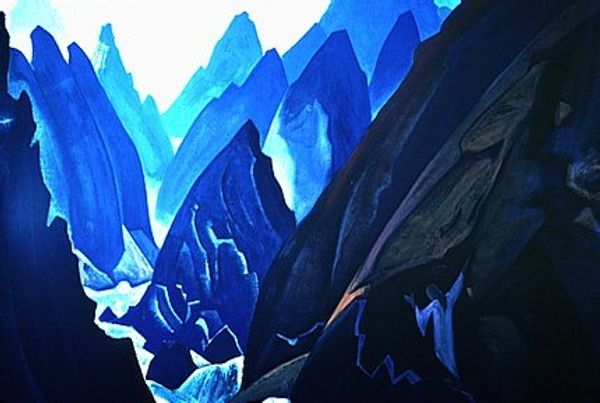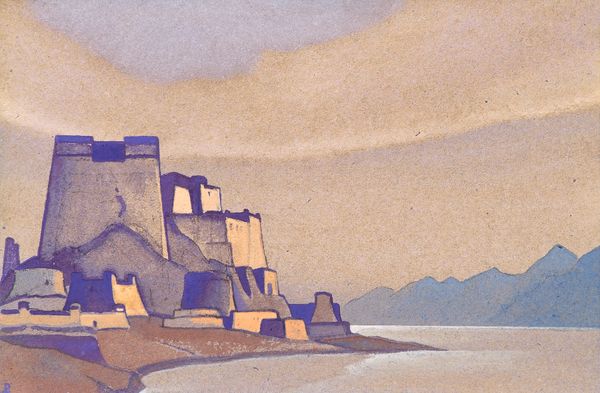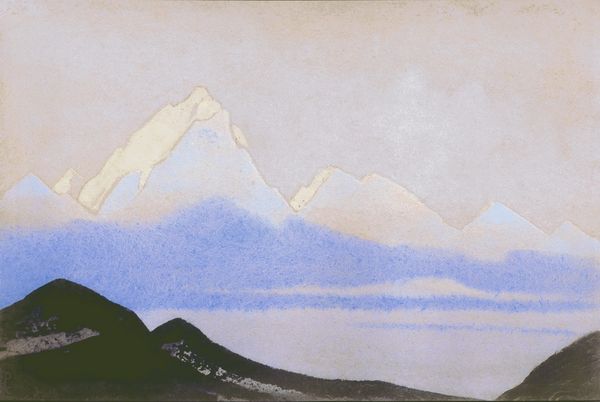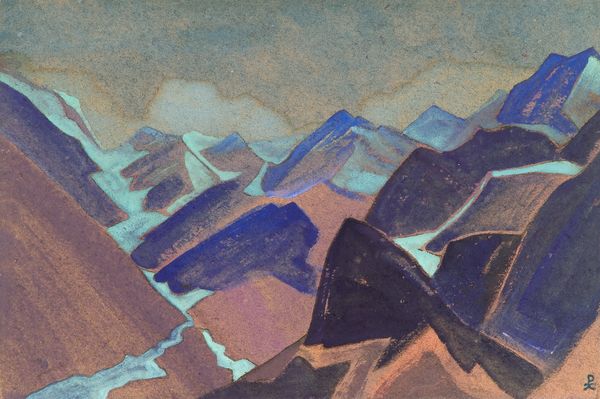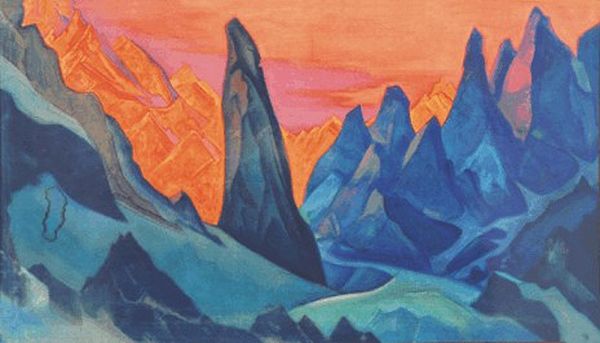
tempera, painting
#
neoclacissism
#
tempera
#
painting
#
landscape
#
form
#
oil painting
#
folk-art
#
mountain
#
orientalism
#
natural-landscape
#
line
#
symbolism
#
realism
Copyright: Public domain
Curator: Here we have "View of the Himalayan Foothills" by Nicholas Roerich. It's a tempera painting and immediately, I'm struck by the artist’s interesting choices for texture and colour. Editor: Yes, there's a remarkable sense of quiet monumentality. The cool palette and the almost geometric rendering of the peaks give it an iconic quality. Mountains in art have long been symbols of spiritual ascent, of reaching higher planes. Curator: Absolutely. And Roerich was deeply involved in the spiritual movements of his time, Theosophy in particular. How do you see that manifesting in his material choices? Tempera, unlike oils, has a matte finish. It gives this landscape a very grounded, almost elemental feel. Editor: I notice, too, how the composition directs our gaze upward. The peaks are so boldly emphasized in dark violet hues, practically piercing the muted blues of the sky. Mountains, in the Eastern traditions Roerich was inspired by, are often seen as the abode of the gods. It is no accident. Curator: That's interesting when we think about tempera's history. It has close ties to religious icon painting. Do you think he’s elevating landscape painting itself to a form of spiritual practice? Editor: Most definitely. Look at the precision of the linework defining each plane, as if each crag is carefully delineated to emphasize the timeless nature of the mountain's silent grandeur. It's an ancient story retold, with the mountains as a testament. Curator: I wonder, though, if part of the folk-art quality you noticed comes from the material itself and the constraints tempera puts on blending colours in a smooth, Western-style realism. It seems to push the form in a more stylised, 'primitive' direction. Editor: Indeed. Roerich is playing with conventions. He acknowledges both Western artistic trends and the rich vein of symbolism found in Eastern philosophy. It’s quite remarkable to experience it even now, years later. Curator: Yes, seeing how Roerich uses process to support his deep subject matter truly deepens our viewing experience. Editor: It encourages you to climb those foothills for yourself and see the other side.
Comments
No comments
Be the first to comment and join the conversation on the ultimate creative platform.
